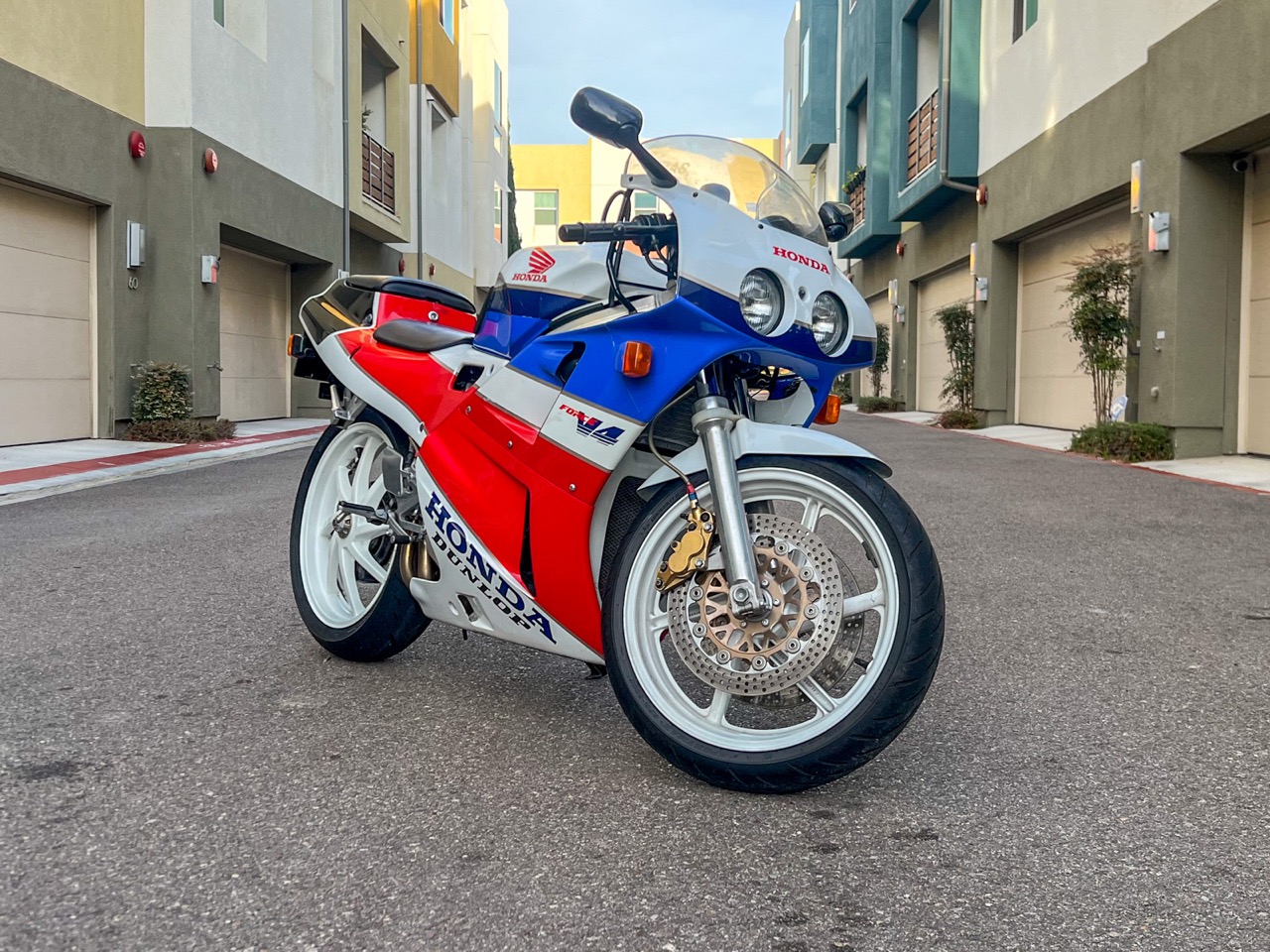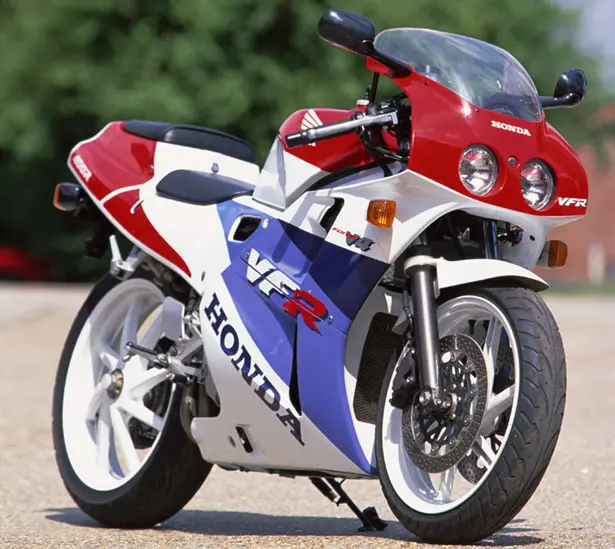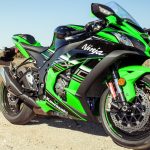Introduction:
The Honda VFR400, particularly known through its NC30 model, is a legendary motorcycle celebrated for its blend of performance and advanced engineering. One of the crucial aspects that contribute to its high regard is its brake horsepower (BHP). This comprehensive guide delves into the specifics of the VFR400’s BHP, why it matters, and how it impacts the bike’s performance and riding experience.

What Is the BHP of the VFR400?
Understanding Brake Horsepower (BHP)
Before diving into the specifics of the VFR400’s BHP, it’s essential to understand what BHP means and why it’s significant.
Definition of BHP: Brake horsepower (BHP) refers to the measure of an engine’s power output before accounting for losses caused by the gearbox, alternator, differential, water pump, and other components. It is determined using a dynamometer, which applies a load to the engine and measures the output at the crankshaft. This metric is crucial for understanding an engine’s potential performance.
Importance of BHP: BHP provides a more accurate representation of an engine’s capability by evaluating its pure power production. High BHP often translates to faster acceleration, higher top speeds, and more robust overall performance. It’s a primary indicator of a vehicle’s performance potential.
The Specifics of the VFR400’s BHP
The Honda VFR400, specifically the NC30 variant, is equipped with a finely tuned engine that delivers impressive power for its size.
VFR400’s BHP Rating: The Honda VFR400 NC30 produces approximately 59 brake horsepower at 12,500 RPM. This power output is significant for a 400cc engine and underlines the advanced engineering that Honda employed in its development.
Peak Power Curve: The peak power of 59 BHP is achieved at the higher end of the RPM range, reflecting the bike’s high-revving nature. This characteristic means that the VFR400R delivers its best performance when pushed towards the upper limits of its rev range, similar to racing engines designed for high RPMs.
Performance Implications: With its 59 BHP, the VFR400R exhibits excellent acceleration and agility. It provides an exhilarating ride, especially in environments where rapid changes in speed and direction are essential, such as on twisty roads or racetracks. The engine’s capability to deliver power consistently across the RPM range ensures a responsive and engaging riding experience.
![]()
Engineering Behind the High BHP
The VFR400’s BHP is the result of advanced engineering and meticulous design choices that optimize power and performance.
V4 Engine Configuration: One of the central features contributing to the VFR400’s high BHP is its 399cc liquid-cooled V4 engine. The V4 configuration offers a compact design that balances power and weight distribution, ideal for maintaining agility and enhancing overall performance.
DOHC Design: The dual overhead camshaft (DOHC) setup allows for precise control of the engine’s four valves per cylinder. This configuration enhances the engine’s ability to breathe efficiently, ensuring that optimal air and fuel mixture enter the combustion chamber, thereby increasing power output.
16-Valve System: The four valves per cylinder system allows for better airflow in and out of the engine. This improved air management means more efficient combustion and higher engine performance, contributing significantly to the bike’s BHP.
Lightweight Internal Components: The use of lightweight materials in internal components, such as pistons and connecting rods, reduces the engine’s internal friction and rotational inertia. This lightness helps the engine rev more freely and reach higher RPMs, where the peak BHP is delivered.
Sophisticated Fueling System: The VFR400 employs a well-calibrated carburetion system that ensures precise fueling.
Performance Characteristics Influenced by BHP
The VFR400’s BHP directly influences its performance attributes, making it a highly capable sportbike.
Acceleration: The bike’s 59 BHP allows for brisk acceleration, which is particularly advantageous in situations requiring quick spurts of speed, such as overtakes or exiting corners on a track. The responsive throttle and high rev range maximize the benefits of this power output.
Top Speed: With its high BHP, the VFR400 is capable of reaching impressive top speeds for its class. The aerodynamic design, combined with the powerful engine, enables the bike to cut through the air efficiently, achieving speeds upwards of 130 mph.
Handling and Agility: The lightweight design and powerful engine combine to produce a nimble and agile motorcycle. The high BHP enhances the bike’s ability to quickly adjust to rider inputs, making it ideal for spirited riding through twisty roads or competitive track environments.

Comparing the VFR400’s BHP with Competitors
To appreciate the VFR400’s BHP fully, it’s helpful to compare it with other sportbikes of similar displacement from the same era.
Yamaha FZR400: The Yamaha FZR400 also produces around 60 BHP, positioning it as a close competitor to the VFR400. While the FZR400 is slightly lighter, the VFR400’s V4 engine configuration and superior mid-range power often make it the preferred choice for many enthusiasts.
Kawasaki ZXR400: Producing roughly 65 BHP, the Kawasaki ZXR400 edges out the VFR400 in raw power. However, the VFR400 is praised for its handling balance and overall riding experience, often making it more desirable for those who appreciate finely tuned engineering.
Suzuki GSX-R400: The GSX-R400 generates around 60 BHP, similar to the VFR400. Despite this, the VFR400’s sophisticated engineering, including its unique single-sided swingarm and advanced valvetrain, often give it an edge in terms of rider satisfaction and mechanical prowess.
Maintenance Tips for Sustaining BHP
Maintaining the VFR400’s impressive BHP requires regular and attentive care to ensure the engine remains in peak condition.
Regular Oil Changes: Using high-quality synthetic oils and adhering to scheduled oil change intervals are crucial for minimizing friction within the engine components. Fresh oil ensures that the engine operates smoothly, maintaining its performance and power output.
Air Filter Maintenance: A clean air filter allows for optimal airflow into the engine, which is essential for efficient combustion. Regular inspection and replacement of the air filter help sustain the engine’s performance.
Valve Adjustments: Valves play a critical role in managing the flow of air and fuel into the engine and expelling exhaust gases. Regular valve clearance checks and adjustments are necessary to maintain the engine’s efficiency and BHP.
Cooling System Checks: A well-functioning cooling system prevents the engine from overheating, which can degrade performance. Regularly checking coolant levels and ensuring the system operates correctly preserves the engine’s health and power output.

Common Questions About the VFR400’s BHP
Answering common questions helps provide a deeper understanding of the VFR400’s BHP and its implications for riders.
Q: Can modifications increase the VFR400’s BHP? A: Yes, modifications such as aftermarket exhaust systems, high-performance air filters, and re-jetted carburetors can increase the BHP. However, it’s important to balance these modifications with proper tuning to prevent engine damage and ensure reliability.
Q: How does the VFR400’s BHP compare to modern 400cc sportbikes? A: While modern 400cc sportbikes may benefit from advancements in technology, the VFR400’s BHP remains competitive. The bike’s engineering excellence and performance characteristics continue to make it a remarkable machine even by today’s standards.
Q: What impact does high BHP have on fuel efficiency? A: Higher BHP generally requires more fuel, especially when the engine operates at higher RPMs. However, sensible riding and regular maintenance can help manage fuel consumption, ensuring a balance between performance and efficiency.
Q: How do I ensure my VFR400 maintains its factory-rated BHP? A: Regular maintenance, including oil changes, air filter replacements, proper carburetor tuning, and cooling system checks, is essential. Keeping the engine in good condition ensures it continues to deliver its factory-rated power output.

Conclusion
The Honda VFR400’s BHP, rated at approximately 59, is a testament to its advanced engineering and performance capabilities. This powerful output allows the VFR400 to deliver an exhilarating riding experience characterized by rapid acceleration, high top speeds, and agile handling. Maintaining this impressive BHP requires regular maintenance and careful attention to the engine’s health.











